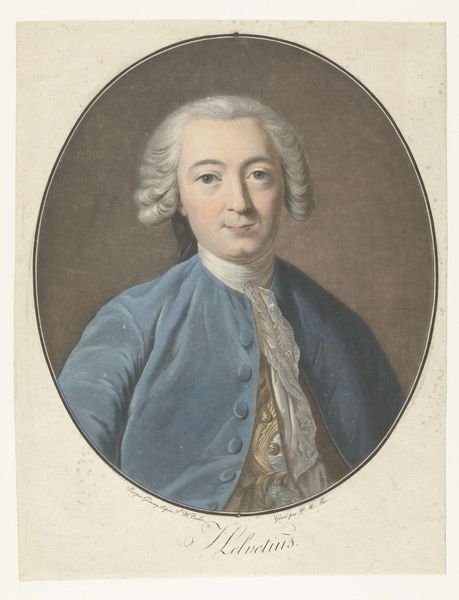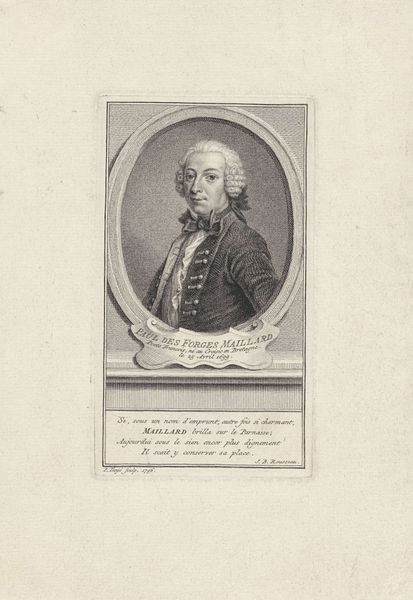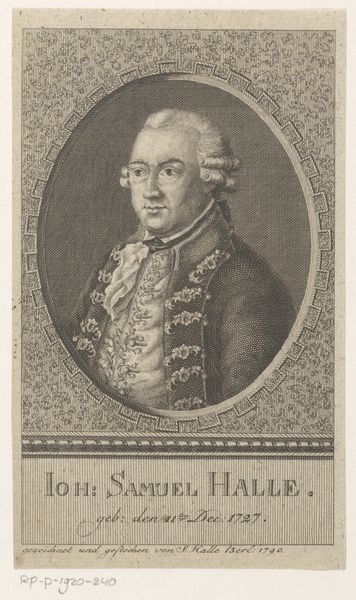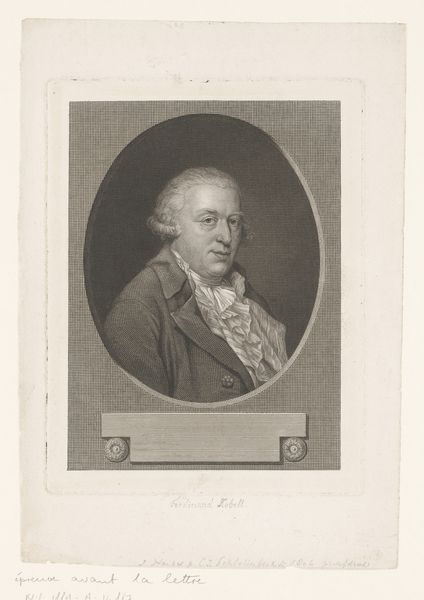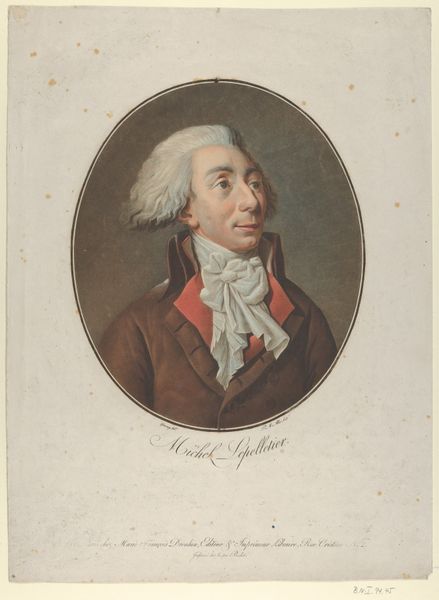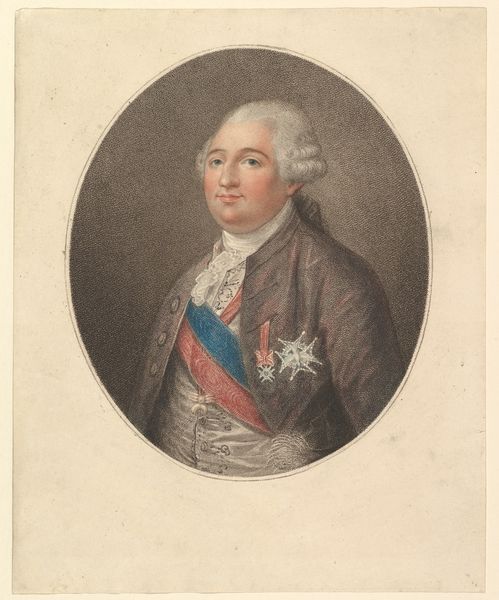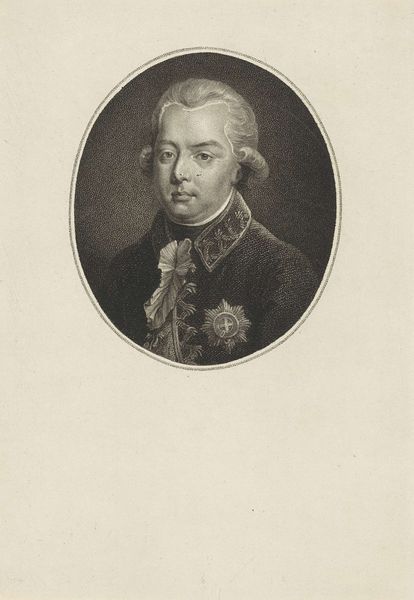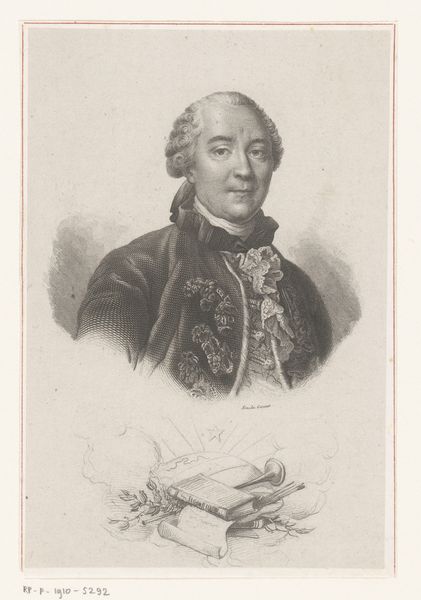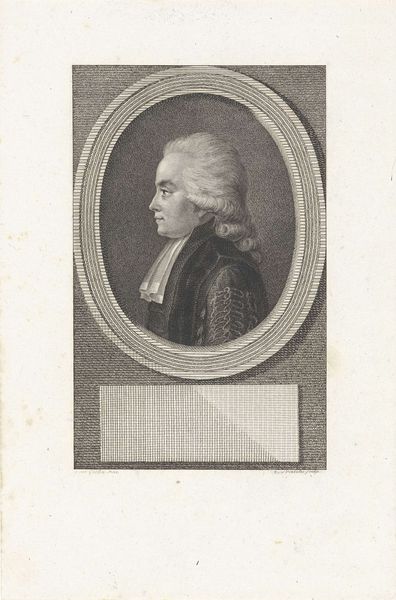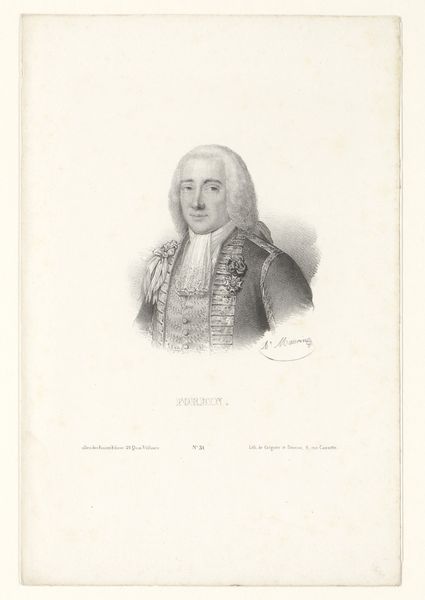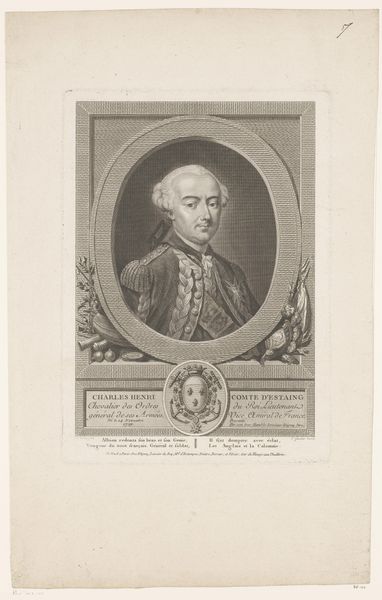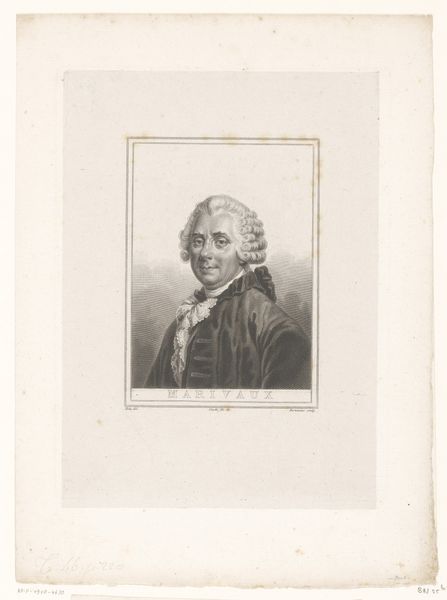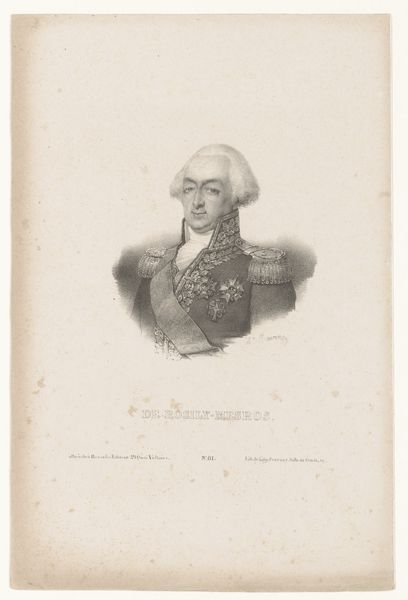
engraving
#
portrait
#
neoclacissism
#
caricature
#
caricature
#
pencil drawing
#
engraving
Dimensions: height 396 mm, width 298 mm
Copyright: Rijks Museum: Open Domain
Curator: This is an engraving titled "Portret van Georges Louis Leclerc graaf van Buffon" created between 1793 and 1795 by Pierre Michel Alix. It exemplifies the Neoclassical portrait style. Editor: My immediate impression is that it's strangely comical! The rather flat rendering coupled with exaggerated frills has an almost satirical quality. Curator: It's interesting that you mention satire. While classified as Neoclassical, one could interpret this through a critical lens, particularly considering the turbulent socio-political climate in France at the time. Was Alix perhaps commenting on the aristocracy, presenting Buffon—a nobleman—in a way that subtly undermines his status? Editor: The artist does prioritize form, doesn't he? The perfect oval frame, the geometric curls of the wig…It almost feels like Buffon is being reduced to a set of decorative shapes. Notice how the buttons on his coat are mere repetitions of the same form! Curator: Indeed! The meticulous detail might seem laudatory on the surface, a visual echo of Enlightenment ideals valuing reason and order. However, it’s the hyper-formality which brings out an implicit critique in this historical and politically instable timeframe, hinting a satirical portrait in the face of this renowned aristocrat. Editor: The coloring as well; it feels rather washed out, doesn’t it? It's a very limited palette dominated by pastel pink and greys which makes the aristocratic presentation a bit less dignified. Curator: The medium itself is telling; engraving lent itself to mass production. This image, disseminated widely, would have played a role in shaping public perception. Was this, by any means, supposed to be a propaganda or caricature engraving rather than a respectable, honor-displaying one? Editor: Ultimately, it’s an intriguing example of how formal elements can contribute to a sense of satire, intentionally or not. And how period values shaped those presentations of personality. Curator: It certainly invites a nuanced understanding of portraiture during the era of Revolution, far removed from straightforward admiration, hinting satire despite the strict standards that were set up at that time.
Comments
No comments
Be the first to comment and join the conversation on the ultimate creative platform.
